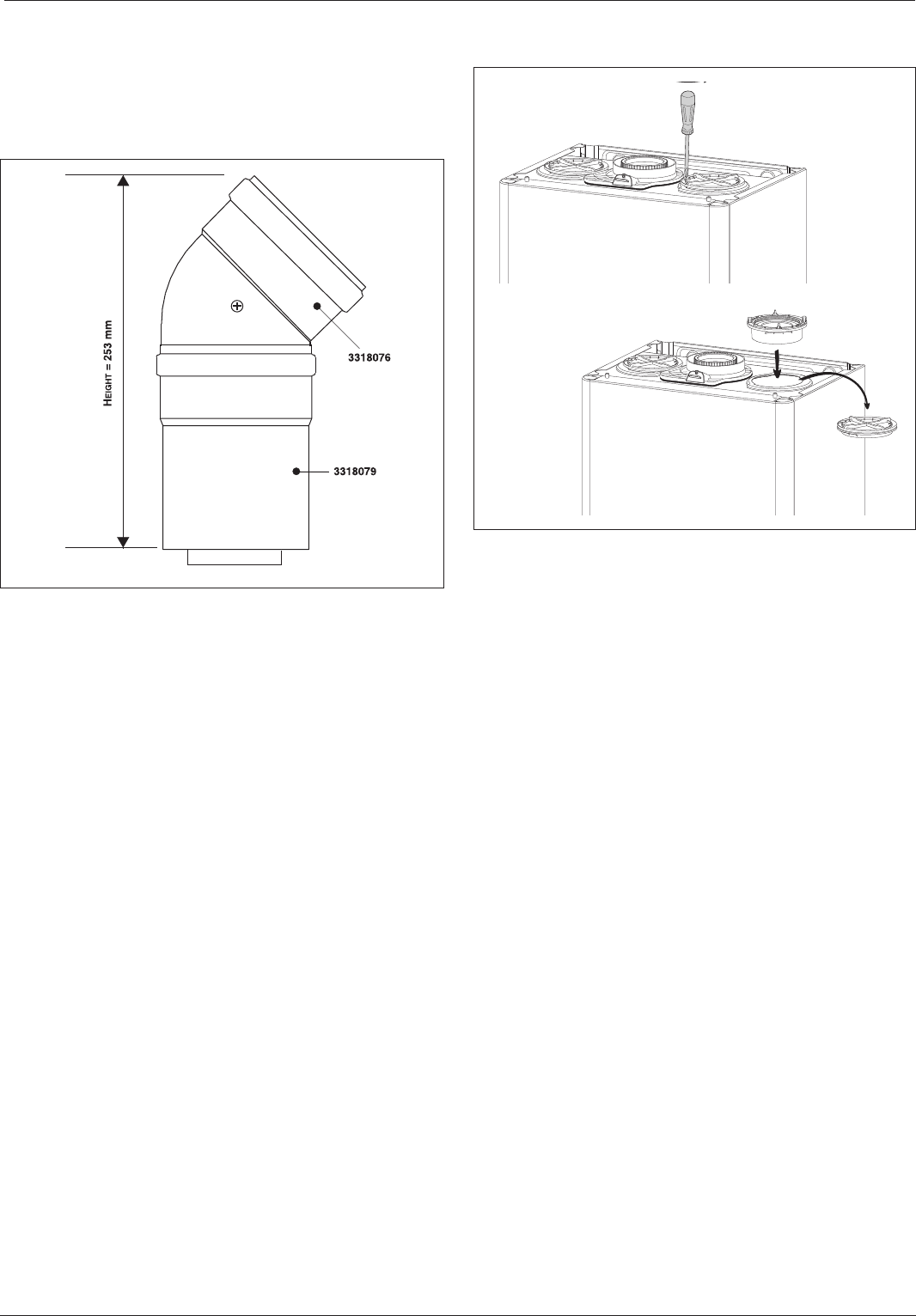
21
installation
Fitting the Twin Pipe (Ø80 / 80)
Fig. 8
Fig. 8a
Before proceeding to t the ue, ensure that the maximum ue
length has not been exceeded (see the tables) and that all elbows and
bends have been taken into consideration. For each additional 90°
elbow 1 metre must be subtracted from the maximum ue length,
and for each 45° 0.5 metres must be subtracted from the maximum
ue length (the height of the vertical adaptor and a 45° bend can be
seen in Fig. 8).
Note: See table for maximum and minimum ue runs.
Where it is not possible to terminate the ue within the distance
permitted for coaxial ues, the twin ue pipe can be used by tting a
special adaptor to the ue connector and using the aperture for the
air intake located on top of the combustion chamber.
Always ensure that the ue is adequately supported, using one ue
bracket per extension and avoiding low points. (ARISTON supply
suitable clamps as Part No. 3318015).
To utilise the air intake it is necessary to:
1) Take the air intake cover o the top of the appliance
2) Assemble the air inlet adaptor - see g. 8a
The twin ue pipes can be tted with or without additional elbows
and need no clamps, simply ensure that the red o-ring is inserted in
the female end of the ue pipe and push the extension piece fully
into the previous section of ue pipe or elbow. Check that the o-ring
is not dislodged when assembling the ue (greasing the seal will aid
assembly).
When running the twin ue pipe vertically it can be converted back to
coaxial ue to enable vertical termination with a coaxial kit by use the
pipe bridge (Twin - Coaxial Adaptor - Part No. 3318089).
It is not possible to terminate concentrically horizontally. Termination
is only possible with separate air and exhaust terminals.
When siting the twin ue pipe, the air intake and exhaust terminals
must terminate on the same wall, the centres of the terminals must
be a minimum of 280 mm apart and the air intake must not be sited
above the exhaust terminal (refer to Fig. 10). The air intake pipe can
be run horizontally, however, the terminal and the nal 1 metre of ue
must be installed either horizontally or with a slight fall away from the
boiler to avoid rain ingress.
It is also strongly recommended that the air intake pipe run be
constructed of insulated pipe to prevent condense forming on the
outside of the tube.
Mark the position of the ue hole in the ceiling and/or roof (see Fig. 7
for distance from wall to the centre of the ue).
Cut a 130mm diameter hole through the ceiling and/or roof and t
the ashing plate to the roof.
DO NOT cut the vertical ue kit.
To connect the vertical ue kit directly to the boiler, place the vertical
starter kit (Part No. 3318079) (see Fig. 7) onto the exhaust manifold
and secure with the clamp, t the vertical adaptor onto the vertical
starter kit (Note: there is no need to use a clamp to secure this as it
is a push t connection), the vertical ue kit must then be inserted
through the roof ashing, this will ensure that the correct clearance
above the roof is provided as the terminal is a xed height.
Should extensions be required, they are available in 1 metre (Part
No. 3318077) and 500mm (Part No. 3318078) lengths. They must be
connected directly to the vertical starter kit before connecting the
adaptor to allow the vertical ue kit to be tted. In the event that
extension pieces need to be shortened, they must only be cut at the
male end and it must be ensured that the inner and outer ue remain
ush.
When using the vertical ue system, action must be taken to ensure
that the ue is supported adequately to prevent the weight being
transferred to the appliance. Use 1 ue bracket per extension.
When the ue passes through a ceiling or wooden oor, there must
be an air gap of 25mm between any part of the ue system and any
combustible material. The use of a ceiling plate will facilitate this.
Also when the ue passes from one room to another a re stop must
be tted to prevent the passage of smoke or re, irrespective of the
structural material through which the ue passes.


















